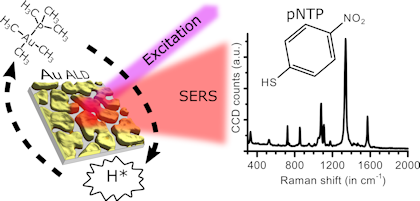Sensors and lighting
Lab-on-a-chip devices
Easy-to-use smart electronic devices have the potential to considerably improve health diagnostics. For example, lab-on-a-chip devices (LOC’s) allow the rapid and early detection of biomarkers at the point-of care, greatly improving a patient’s recovery or survival chances. Compared to conventional laboratory techniques LOC’s have a smaller footprint, lower cost and need smaller analyte volumes needed, enabling the miniaturization of medical technologies. LOC’s consist of multiple biosensor areas integrated into a microfluidic platform, allowing an automatic and in-flow detection of analyte inside microfluidic channels. Controlling the surface properties inside these microfluidic channels is essential to interface with biology. At CoCooN thin films are deposited using various techniques and their bio-functional properties are further explored in close collaboration with the Life Science Technologies department at imec (Leuven).
Publications:
Vandenbroucke, Sofie, et al. “Photocatalytic Lithography with Atomic Layer-Deposited TiO2 Films to Tailor Biointerface Properties.” ADVANCED MATERIALS INTERFACES, vol. 6, no. 9, 2019. DOI: 10.1002/admi.201900035
SERS substrates
Surface enhanced Raman spectroscopy (SERS) is a powerful method to detect and quantify the presence of substances on a surface, with a detection limit on the level of a single molecule. Applications can be found in biosensors, health care and monitoring of industrial processes. However, SERS relies on the availability of high-quality uniform substrates. ALD is being investigated for development of SERS substrates by the controlled deposition of Ag, Au or Cu. Structures with these metals on the surface amplify the Raman effect by excitation of surface plasmons.
Publications:
Van Daele, Michiel, et al. “Plasma-Enhanced Atomic Layer Deposition of Nanostructured Gold near Room Temperature.” ACS APPLIED MATERIALS & INTERFACES, vol. 11, no. 40, 2019, pp. 37229–38. DOI: 10.1021/acsami.9b10848
Encapsulation of Quantum Dots
Nowadays more and more lighting devices and other optical applications rely on blue LEDs in combination with color convertors to achieve white light and a wide color spectrum. One group of these color converting materials are the colloidal semiconductor nanocrystals or quantum dots (QDs), a research topic of the PCN research group. QDs are very sensitive to degradation by contact with moisture or air. CoCooN is collaborating with the PCN group by studying the encapsulation of phosphors and QDs by ALD.
Publications:
Devloo-Casier, Kilian, et al. “A Case Study of ALD Encapsulation of Quantum Dots: Embedding Supported CdSe/CdS/ZnS Quantum Dots in a ZnO Matrix.” JOURNAL OF PHYSICAL CHEMISTRY C, vol. 120, no. 32, 2016, pp. 18039–45. DOI: 10.1021/acs.jpcc.6b04398
Kuhs, Jakob, et al. “In Situ Photoluminescence of Colloidal Quantum Dots during Gas Exposure : The Role of Water and Reactive Atomic Layer Deposition Precursors.” ACS APPLIED MATERIALS & INTERFACES, vol. 11, no. 29, 2019, pp. 26277–87. DOI: 10.1021/acsami.9b08259


